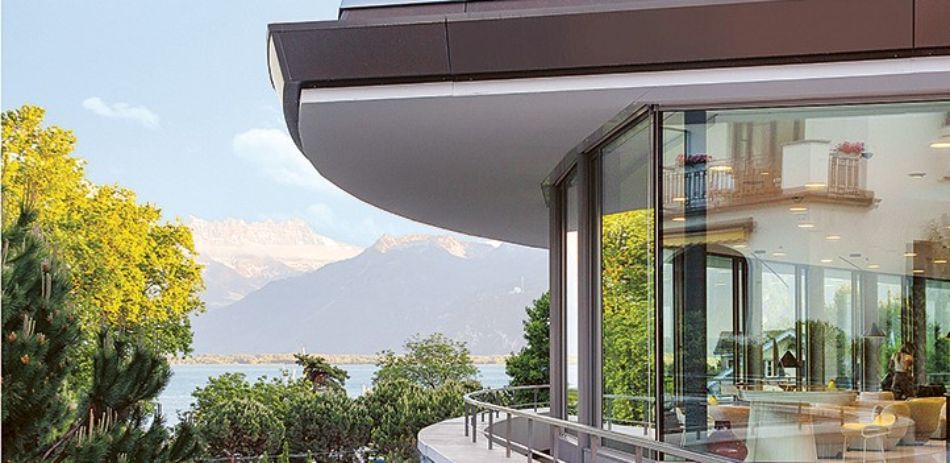What do you see as the key ingredients to living longer and living better?
At Clinique La Prairie, we focus on four pillars to promote better ageing: Medical treatments, nutrition, wellbeing and movement. We have developed a three-stage “longevity process” that consists of diagnostics, intervention and follow-up. In the diagnostics stage, we carry out a longevity master assessment for each client to understand the unique way their body works. The second element of the process is holistic intervention where we build on the diagnostic insights gained from the assessment and concentrate on the four pillars I just mentioned – medical, nutrition and so on. And finally, there is a follow-up stage to evaluate the effectiveness of the treatment.
What is your approach to serving a discerning global clientele?
We have a philosophy based on three “Cs”. The first “C” is care; it is about ensuring all our people are committed to taking care of our clients. And then there is competence. Whenever you are searching for longevity therapies or a longevity structure, competence is extremely important. If you travel from New York to Clinique La Prairie in Switzerland, for example, you want the doctor treating you to be an expert in their field. The third “C” is customisation. It is important to remember that superficially, we are all the same – but in reality, we are all different. This means that whatever treatment you receive, it needs to be personalised. This is why we have customised interventions and then we have the follow-up stage to see if the treatment is working. This gives us direction.
The global population is ageing. What are the most fundamental implications of this shift for you in terms of challenges but also opportunities?
We occupy a niche but we also want to share our insights on the topic of longevity – or let’s call it preventative medicine – more widely. We think it is important to not only focus on illness but to also anticipate it through diagnostics. This makes it possible to predict what could happen to a person as they age and to then act on it by focusing on nutrition, on movement and on helping to change their mindset. We all know that we should eat more salad or we should walk more – but the question is why don’t we do it? What is needed is a change of mindset. I believe that we need humans to bring about that change.
That must give your employees a very strong sense of purpose. How important is this concept of changing lives for your people and your corporate culture?
I would say that we are all very lucky to work for a company whose purpose is helping people. This concept of transforming lives is very important for our employees – and, of course, for the people who come to the clinic.
Clinique La Prairie was founded almost a century ago. How have you managed to stay relevant over that time?
I think that at its core, our company has always had a very strong focus on innovation. We make significant investments in technology and in things that can help to transform the lives of our clients. Their experience of Clinique La Prairie is extremely important to us. This is why we focus so intensively on delivering an optimal client experience, whether they are at our Health Resort in Montreux or one of our Longevity Hubs.
Last year, Clinique La Prairie announced the launch of a “Longevity Fund” to drive science-based advancements in longevity. What can you tell us about this new venture?
With our unique perspective on the industry, we decided that it was the right time to make a meaningful investment in longevity based on the objective of helping and inspiring people to live a longer and a better life. We aim to do so through the fund by investing in start-up companies that want to innovate in the areas of diagnostics, intervention and follow-up. The fund’s focus is on the pillars I mentioned earlier. For example, we are going to look for companies active in the field of medical treatments or for start-ups specialising in nutrition that promotes longevity or in wellbeing or movement. And the final concept behind the fund is, of course, to generate a return for investors. But in the end, the idea of helping people to live a longer and better life is always the main concept.
Superficially, we are all the same – but in reality, we are all different.
You spoke about technology. Clearly, it plays a huge role in terms of medical treatments but how relevant is it when it comes to client interaction?
I believe that technology has potential – especially when it comes to helping our doctors to better analyse client data – and we are making significant use of artificial intelligence for diagnostics. Of course, we also leverage the power of technology to stay connected with our clients after they leave our Health Resorts or Longevity Hubs. At the same time, the reason we created our Longevity Hubs was to maintain a personal relationship with our clients. In the end, it all comes down to humans wanting to help humans.
This interview was published in the 2/2025 edition of EFG’s InTalks magazine.


